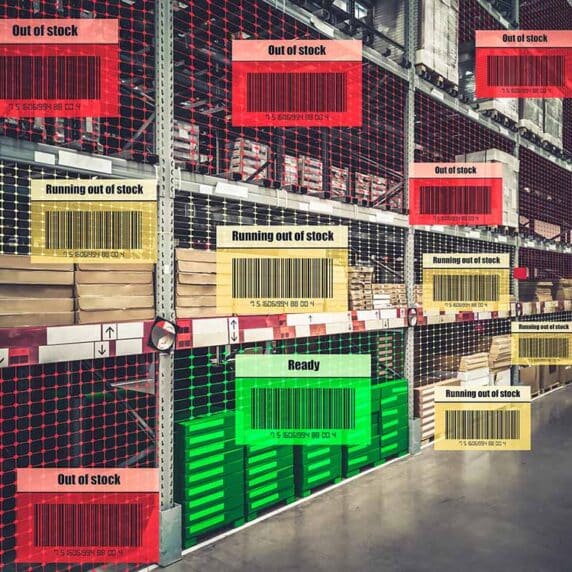Truckload Optimization: Driving Decisions with Data
If you’re still relying on manual spreadsheets or a basic transportation management system (TMS) to manage truckload planning and optimization, you’re likely missing out on key opportunities for greater efficiency, cost savings, and better service. Today’s supply chains are moving too fast, and logistics operations are becoming too complex for outdated or manual planning tools to keep up.
Customer expectations continue to rise. Fuel prices fluctuate unpredictably. And global supply chains face increasing complexity and risk. These modern transportation challenges require more agile, intelligent approaches to logistics.
While basic planning tools might work for small or straightforward operations, they begin to show their limitations as supply chains scale or evolve. Static decisions based on limited information cannot adapt to real-time disruptions or dynamic variables. That’s where modern truckload optimization comes in, leveraging advanced technologies like machine learning (ML), artificial intelligence (AI), and data-driven automation to improve load building, routing, carrier selection, and resource utilization.
By using a more advanced transportation management system integrated with intelligent planning capabilities, companies can significantly improve truck capacity utilization, cut costs, and elevate service performance—ultimately leading to more efficient, smarter, and fuller truckload planning.
Book your 15-minute optimization assessment today
Truckload Optimization: From Reactive to Proactive Planning
Legacy systems often rely on static rules and historical averages, making them reactive and inflexible. In contrast, modern truckload optimization tools work in real time, dynamically adjusting to changing conditions and supporting proactive logistics planning.
With real-time optimization, logistics teams can make smarter decisions faster—factoring in a wide range of variables that affect transportation. These include:
- Complex delivery profiles and demanding service-level agreements (SLAs)
- Fluctuating demand, unexpected surges, and variable equipment availability
- Driver scheduling constraints and changing regulatory environments
- Seasonal volume spikes and unforeseen supply chain disruptions
Every Decision Matters in Truckload Optimization
Trucking moves more than 70% of the US’s freight by weight. That makes truckload optimization not just an operational task—but a strategic opportunity. Even minor inefficiencies in load planning, underutilized truck capacity, or suboptimal routing can add up to significant losses over time.
With an advanced transportation management system that enables multi-constraint optimization, companies can:
Small improvements have a big impact. For example, a system that consistently utilizes 98% of a truck’s capacity will significantly outperform one operating at just 90–95%. That extra 3–8% of efficiency can drive meaningful savings and create a long-term competitive edge in today’s demanding logistics environment.
Embrace Complexity. Drive Performance.
Traditional planning approaches are built for consistency and predictability. But modern supply chains are dynamic and multifaceted. That’s why businesses must move beyond simple rules-based models and embrace multi-constraint optimization—a planning methodology that evaluates multiple variables and constraints simultaneously to deliver optimal logistics decisions.
Today’s advanced planning systems are purpose-built to handle the complexity of large-scale logistics. Instead of reacting to issues after the fact, companies using intelligent truckload optimization platforms can model different scenarios and finalize the most efficient way to move goods before execution.
By integrating real-time data and AI-driven planning into a modern transportation management system, logistics teams can turn traditional truckload planning into a strategic asset.
These systems are capable of:
- Running simultaneous what-if scenario analyses
- Adapting in real time to shifting supply chain conditions
- Balancing cost, service, and truck capacity in planning decisions
- Scaling effectively across diverse networks with varied constraints
As the system ingests data and learns from your logistics patterns, performance improves. Over time, measurable gains appear across key metrics:
- Transportation efficiency and load optimization
- On-time service reliability and SLA performance
- Operational productivity across logistics functions
- End-to-end network visibility and transparency
- Supply chain resilience and risk mitigation
The Long-Term Payoff: From Planning to Performance
When implemented effectively, truckload optimization becomes much more than just a logistics planning tool—it becomes a driver of long-term performance and strategic advantage. Rather than treating transportation as a purely executional function, companies can use advanced planning to elevate decision-making across the supply chain.
The technology is proven. The benefits are real. The companies investing in modern, data-driven planning capabilities are better prepared to face current and future transportation challenges.
With the right transportation management system and optimization platform, logistics teams can
- Plan faster and smarter
- Adapt proactively to change
- Achieve better truck capacity utilization
- Deliver superior customer outcomes
- Reduce costs and environmental impact
Truckload optimization represents a fundamental shift in how logistics is managed. It replaces static, siloed decisions with intelligent, network-wide strategies. By embracing AI-driven tools and multi-constraint optimization, businesses gain a sustainable advantage in today’s competitive environment.
The Time for Truckload Optimization Is Now
With increasing demand, rising costs, and growing supply chain uncertainty, companies must rethink their logistics planning strategies. Truckload optimization isn’t just a trend—it’s a necessary evolution for efficient, resilient, and customer-centric transportation management.
As planning complexity increases, the tools we use must evolve as well. Those who embrace advanced truckload planning solutions and invest in scalable optimization platforms will be the ones who thrive—not just survive—in the future of logistics.








